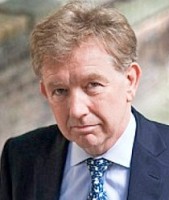Guest Blog: Chief Executives need an annual Hubris MOT. (2015)

“There is … sensitivity around executive hubris but, if Boards of Directors do not ask the unaskable in time to prevent a crisis, who will!
Chris Wiscarson, Chief Executive, Equitable Life Assurance Society
The first in an occasional series of contributions from members of our Advisory Board and other friends of the Daedalus Trust. Published online 2 February 2015
Having run many companies over the last 25 years, I have worked with some extraordinarily capable boards and chairmen. As a non-executive director, I have worked with some extraordinarily capable chief executives; as well as some rather less so. In 2012, following the publication of Professor Richard Roberts’ paper on “Did anyone learn anything from the Equitable Life”, I coined the phrase that there should be an annual MOT for Chief Executives. The Financial Times picked it up thus: Road test CEOs to avoid corporate crashes
Just such an MOT is carried out on me by the Senior Independent Director of the company of which I am Chief Executive. We would not argue that the MOT is scientific but, as an experiment, it does give the Board an insight that, over time, may provide clues on how to diagnose hubris.
It is indisputable that there exist examples of organisational failure where customers, shareholders and staff have suffered great distress and financial loss. In a number of well-known failures, both the Chief Executive and Chairman have come in for considerable criticism. What is not proven is that hubris was present in the Chief Executive or, indeed, causal to the disaster. That said, had Board members known that the Chief Executive (or Chairman) had been suffering from hubris, their challenge to, and subsequent support of, particular business decisions are likely to have been very different.
The answers to the following questions, therefore, would give enormous help to any Board.
· What are the early signs of hubris in a Chief Executive or Chairman? When spotted, what Board interventions are appropriate?
· Is hubris always a present state or does it come and go depending on different situations?
· Is hubris self-diagnosable?
· What is the role of the Board in spotting hubris? Ought a hubris assessment of the Chief Executive be included in the Board’s Terms of Reference?
· Should Boards formally adopt tools to diagnose hubris? In the prescribed three year external review of Board effectiveness, should the detection of hubris be a standard area of enquiry?
There is an understandable sensitivity around executive hubris but, if Boards of Directors do not ask the unaskable in time to prevent a crisis, who will!
Chris Wiscarson, Chief Executive
Equitable Life Assurance Society






Leave a comment (1)
Back to the topAs a Behavioural Scientist I see this article as a needed observation from someone in a CEO role . I think it was Thorndike who said (paraphrasing)
‘anything that exists does so in some amount, anything that exists in some amount can be measured in some way’
Direct and indirect approaches may be needed that speak to the concept of hubris.
Direct assessment of a prescriptive nature would be difficult to support as it might be necessary to go down the DSM V approach and this poses significant issues in terms of potential versus actual behaviour and the rights of the individual.
Indirect approaches using tools such as Diction 6 to analyse the language used by individuals may offer a means of identifying possible hubrisistic traits and their evolution in individuals, but this runs the risk of individuals ‘gaming” the system through the use of carefully crafted output.
A developmental approach which used an assessment approach that could be self-administered and the results shared in a confidential way may be worth considering.
The old adage ‘it’s lonely at the top’ springs to mind and I am reminded of the role played by the Robert Duvall character in the Godfather of the consiglierie. Perhaps a means of self-assessment and someone with the role of trusted advisor who also has a duty to inform the Chairman and/or a regulator if they believe the situation is in danger of serious negative impact?
It might be worth talking to Chris Wiscarson to explore the feasibility, viability and acceptability of several conceptual approaches and using the outcome of this as the basis for an exploration across a wider group od CEO’s and Chairs to put some bounds around where a potential solution might lie if this has not been done already.